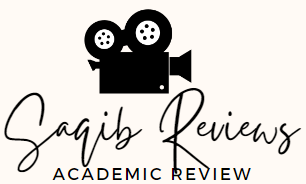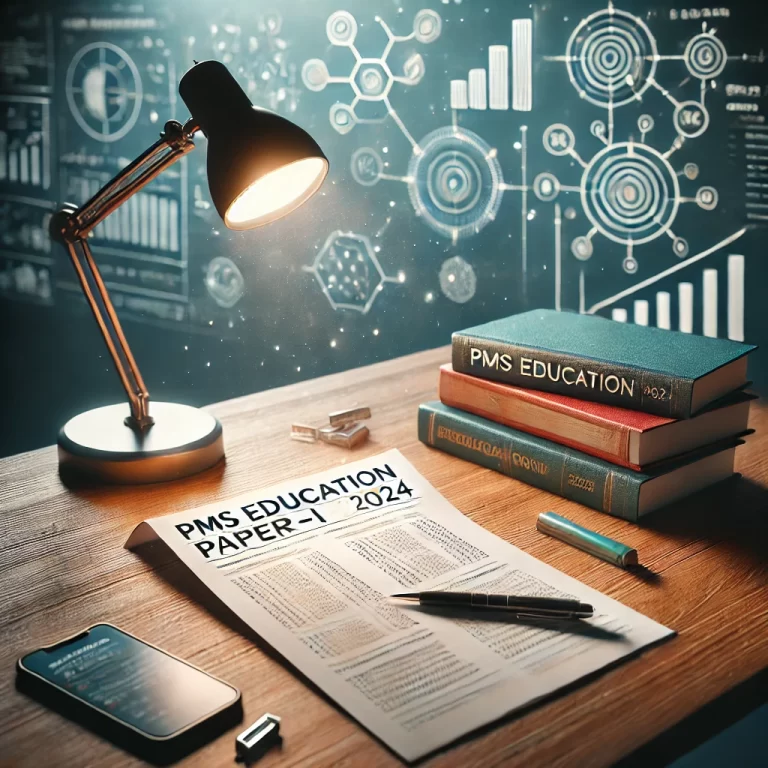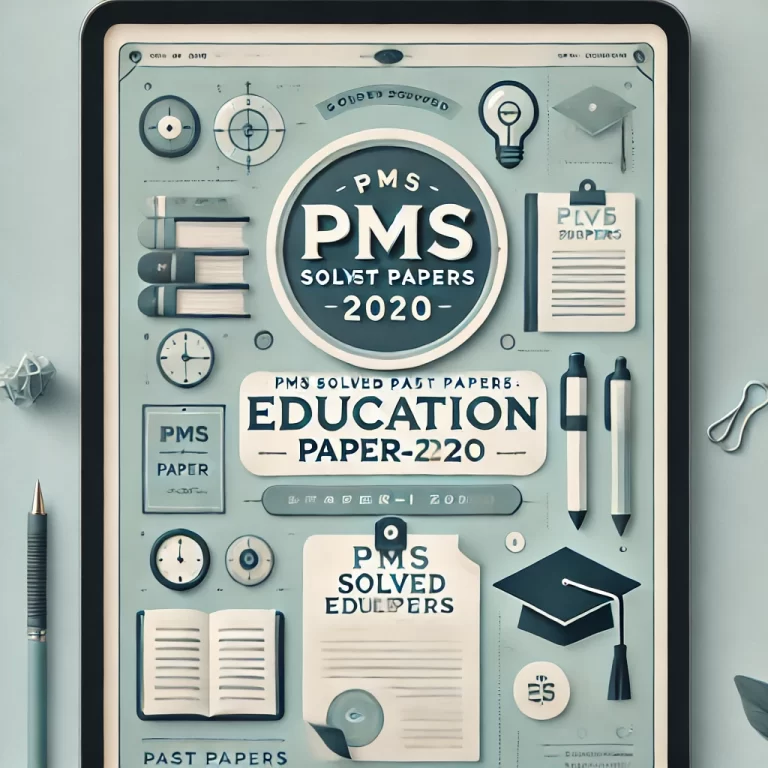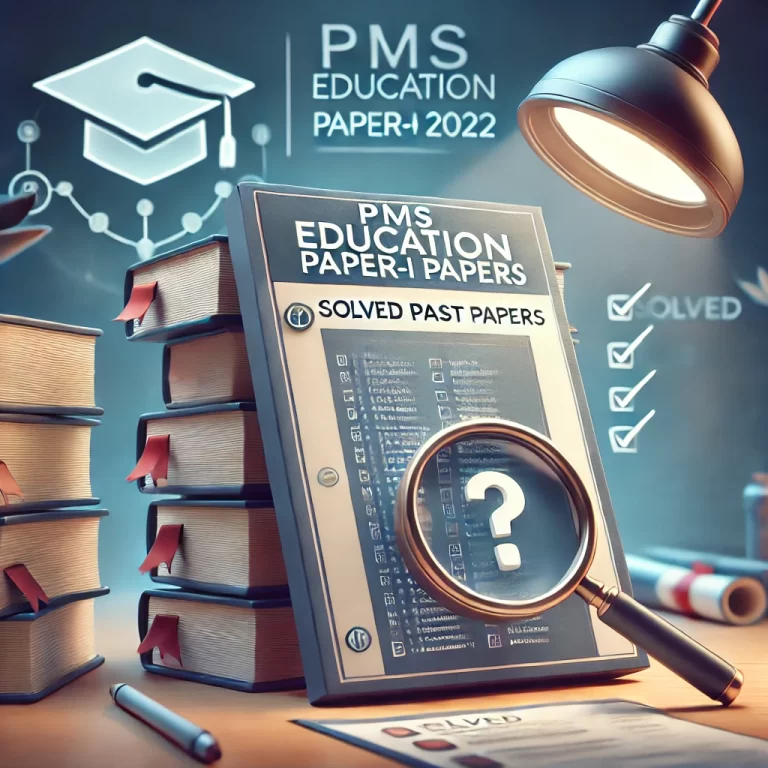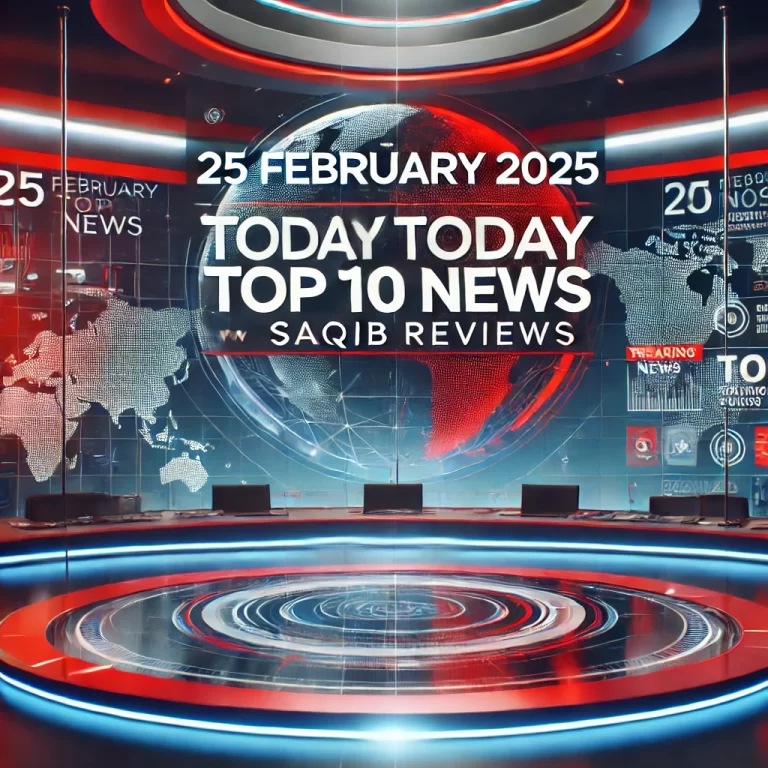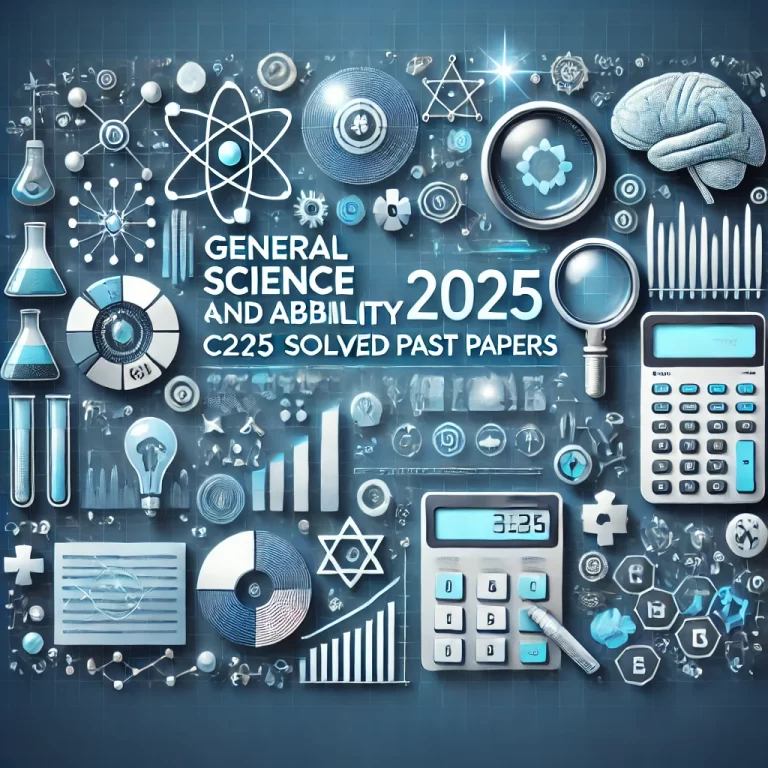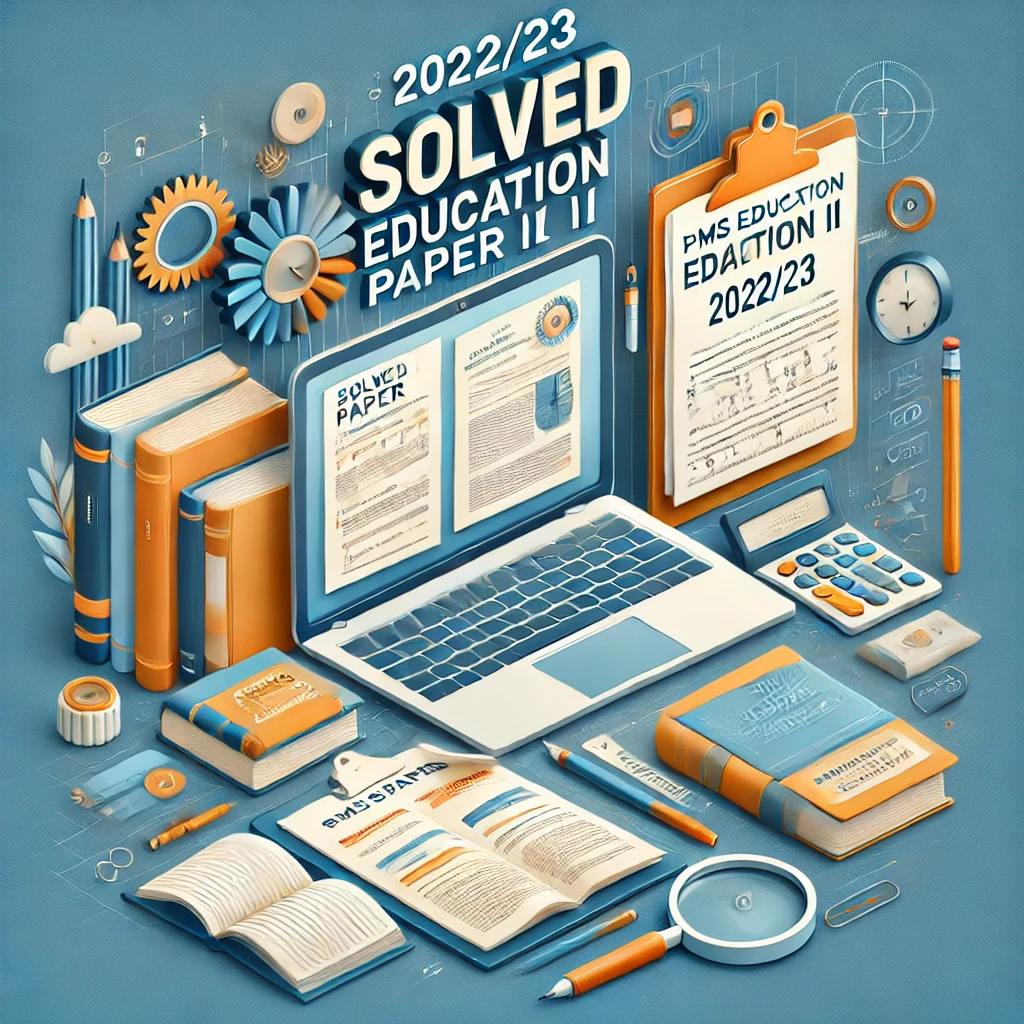
PMS Education Paper I Solved
Detailed Solutions for Punjab Public Service Commission’s Provincial Management Service Exam (2022)
Q.No.1: Private Sector Has Greater Impact in Growth of Our Education System. Analyze It with Reference to Students, Teachers, and Finances.
Introduction
The private sector has become a pivotal force in shaping Pakistan’s education system. Its influence spans access, quality, and resource allocation, though it brings both opportunities and challenges. Below is a detailed analysis of its impact on students, teachers, and finances.
Impact on Students
- Access & Infrastructure: Private institutions like Beaconhouse and The City School dominate urban areas, offering modern facilities (e.g., smart classrooms, labs). However, rural regions face limited access, exacerbating urban-rural disparities.
- Quality of Education: Private schools often adopt international curricula (e.g., Cambridge system), enhancing student competitiveness. Yet, excessive focus on exams fosters rote learning over critical thinking.
- Affordability Issues: High fees exclude low-income families. For instance, elite private schools in Lahore charge over PKR 50,000/month, while public schools remain underfunded.
Case Study: In Karachi, 60% of middle-class families prioritize private schools despite financial strain, citing better English proficiency outcomes.
Impact on Teachers
- Employment Opportunities: Private schools employ over 500,000 teachers nationally. However, job insecurity is rampant in low-cost chains (e.g., Taleem Ghar), where contracts lack benefits.
- Salary Disparities: Elite institutions offer salaries up to PKR 150,000/month, attracting qualified educators. In contrast, budget schools pay as low as PKR 15,000/month, leading to high turnover.
- Professional Development: Chains like SABAQ provide teacher training workshops, improving pedagogy. Public sector teachers often lack such opportunities.
Statistic: A 2022 survey revealed that 70% of private school teachers in Punjab work without health insurance or pensions.
Impact on Finances
- Reduced Government Burden: Private investments save the state PKR 500 billion annually, allowing focus on infrastructure projects.
- Commercialization Risks: Profit-driven models prioritize admissions over quality. For example, some schools overcrowd classrooms to maximize revenue.
- Equity Concerns: Wealthy districts attract private funding, while marginalized areas rely on dilapidated public schools. This widens the socio-economic gap.
Example: The Alif Ailaan report (2023) notes that 70% of private education spending is concentrated in Punjab and Sindh, neglecting Balochistan.
Conclusion
The private sector drives innovation and accessibility but deepens inequality. Policymakers must regulate fees, mandate teacher welfare, and incentivize rural private investments to balance growth with equity.
Q.No.2: Differentiate Between Education Policy and Development Plan. Why These Two Documents Are Framed Separately? Explain with Arguments. (5+15=20 Marks)
Introduction
Education policy and development plans are complementary but distinct frameworks that guide a nation’s educational progress. While they share the goal of improving education systems, their roles, structures, and implementations differ significantly. Below is a detailed analysis of their differences and the rationale for separate framing.
Differentiation Between Education Policy and Development Plan
- Definition & Scope:
- Education Policy: A visionary document outlining principles, goals, and values (e.g., National Education Policy 2021 emphasizing inclusivity).
- Development Plan: An actionable blueprint with timelines, budgets, and measurable targets (e.g., Punjab Education Sector Plan 2023-2028 allocating PKR 200 billion for school construction).
- Purpose:
- Policy sets the “why” and “what” (e.g., promoting STEM education).
- Plan defines the “how” and “when” (e.g., training 10,000 STEM teachers by 2025).
- Timeframe:
- Policies are long-term (10–20 years).
- Plans are medium-term (3–5 years).
Quote: “A policy without a plan is merely a wish; a plan without a policy is a ship without a compass.” — Dr. Pervez Hoodbhoy, Pakistani physicist and education reform advocate.
Why Are They Framed Separately? Key Arguments
- 1. Strategic vs. Operational Focus:
- Policies address ideological shifts (e.g., integrating Islamic ethics into curricula).
- Plans focus on logistics (e.g., printing 5 million revised textbooks by 2024).
- 2. Flexibility vs. Specificity:
- Policies require adaptability to evolving societal needs (e.g., digital literacy post-COVID).
- Plans demand rigid milestones to ensure accountability (e.g., quarterly progress reports).
- 3. Stakeholder Engagement:
- Policies involve broader consultations (politicians, scholars, civil society).
- Plans are drafted by technocrats and implementation agencies (e.g., provincial education departments).
- 4. Avoiding Bureaucratic Rigidity:
- Separating the two prevents operational bottlenecks. For instance, Pakistan’s 2017 National Education Policy advocated for free secondary education, but the 2018-2023 Development Plan outlined phased budget allocations.
Historical Example: The 1972 National Education Policy aimed to eliminate elitism, but its attached plan failed due to rushed nationalization of schools. This underscores the risks of merging policy and planning.
Quote: “Plans are nothing; planning is everything.” — Dwight D. Eisenhower. This highlights the need for dynamic planning distinct from static policy frameworks.
Consequences of Merging Policy and Plan
- Operational Chaos: Overlapping roles delay projects (e.g., delayed textbook revisions in Khyber Pakhtunkhwa, 2019).
- Reduced Adaptability: Combined documents struggle to address crises like floods displacing 1 million students in 2022.
Conclusion
Separating education policy and development plans ensures clarity, accountability, and adaptability. While policies provide the philosophical foundation, plans translate vision into reality. As noted in the UNESCO Global Education Monitoring Report (2021), nations with distinct frameworks achieve 30% faster progress in education SDGs.
Q.No.3: Elaborate Philosophical and Sociological Foundations of Education. Why the Comprehensive Knowledge of These Foundations Is Important for a Teacher? Discuss with Reference to Pakistani Society. (20 Marks)
Introduction
Education is rooted in philosophical ideals that define its purpose and sociological contexts that shape its implementation. In Pakistan, where cultural, religious, and socioeconomic diversity dominates, understanding these foundations equips teachers to address complex classroom realities.
Philosophical Foundations of Education
- Idealism: Focuses on moral and ethical development. Example: Islamic teachings in Pakistan’s curriculum emphasize honesty and community service.
- Pragmatism: Prioritizes experiential learning. Example: STEM labs in urban schools like Lahore Grammar School foster problem-solving skills.
- Existentialism: Encourages individuality and critical thinking. Challenge: Rote learning in public schools stifles this approach.
Quote: “Education is not preparation for life; education is life itself.” — John Dewey, highlighting pragmatism’s relevance to Pakistan’s skill-based education needs.
Sociological Foundations of Education
- Socialization: Schools transmit cultural values. Example: Urdu-medium schools promote national unity, while regional languages preserve local identities.
- Equity & Access: Urban elite schools vs. rural “ghost schools” with no teachers. Statistic: 22.8 million Pakistani children are out of school (UNICEF, 2023).
- Gender Dynamics: Only 13% of girls in Balochistan complete primary education due to cultural norms.
Case Study: The Zarb-e-Azb military operation displaced millions, forcing schools in KP to integrate trauma-informed teaching methods.
Why Teachers Need These Foundations: Pakistani Context
- Curriculum Adaptation:
- Philosophy guides what to teach (e.g., integrating Iqbal’s concept of “Khudi”).
- Sociology determines how to teach (e.g., multilingual instruction in Sindh).
- Addressing Inequality: Teachers in Punjab’s flood-affected areas use mobile schools to reach marginalized students.
- Cultural Sensitivity: Avoiding sectarian biases in textbooks while teaching Islamic studies.
Quote: “The philosophy of the schoolroom in one generation will be the philosophy of government in the next.” — Abraham Lincoln, underscoring the long-term impact of educational philosophy.
Challenges in Pakistan
- Single National Curriculum (SNC): Aims to unify education but faces backlash for overlooking regional disparities.
- Commercialization: Elite private schools prioritize profits over holistic development.
Conclusion
For Pakistani teachers, philosophical foundations provide ethical direction, while sociological insights enable contextual adaptation. As Allama Iqbal stated, “Nations are born in the hearts of poets; they prosper and die in the hands of politicians.” Teachers, armed with these foundations, can nurture a resilient, equitable education system.
Q.No.4: There is a Demand to Teach Islamic Concept of Education in Our Education Institutions. How Our Teacher Education Program Can Be Helpful to Achieve This Objective? (20 Marks)
Introduction
The Islamic concept of education emphasizes holistic development—integrating faith, ethics, and knowledge to nurture morally upright individuals. In Pakistan, where Islamic values are deeply rooted, teacher education programs must evolve to equip educators with the tools to embed these principles into modern pedagogy. Below is a structured analysis of strategies to achieve this objective.
Strategies for Teacher Education Programs
- Curriculum Integration:
- Include Islamic Pedagogy as a core subject in B.Ed./M.Ed. programs, covering Quranic teachings on education (e.g., Surah Al-Alaq’s emphasis on learning).
- Develop modules on Ethics in Education, aligning lessons with Prophetic traditions (e.g., honesty, compassion).
- Practical Training:
- Workshops on integrating Islamic values across subjects (e.g., teaching environmental stewardship through Quranic verses like Surah Ar-Rum:41).
- Simulation exercises to address classroom diversity (e.g., balancing Islamic teachings with respect for non-Muslim students).
- Collaboration with Islamic Scholars:
- Partner with institutions like Al-Azhar University or International Islamic University Islamabad to design authentic content.
- Example: Punjab’s Ilm-o-Amal initiative trains teachers in Quranic storytelling techniques.
Quote: “Seek knowledge from the cradle to the grave.” — Prophet Muhammad (PBUH). This underscores lifelong learning, a principle teacher training must embody.
Addressing Challenges
- Teacher Preparedness:
- Mandate certifications in Islamic education for public school teachers to bridge knowledge gaps.
- Leverage digital platforms (e.g., Darul Uloom Online) for remote training in rural areas.
- Resource Development:
- Create textbooks co-authored by educators and scholars (e.g., Islamiyat books contextualizing jihad as self-improvement).
- Use multimedia tools (animated videos on Seerah) to engage students.
- Inclusivity Measures:
- Train teachers to foster interfaith harmony while upholding Islamic values (e.g., discussing shared ethics in Christianity and Islam).
- Example: Karachi’s Harmony Schools blend Islamic teachings with universal human rights education.
Case Study: Turkey’s Imam Hatip Schools successfully merge religious and secular education—a model Pakistan could adapt.
Role of Madrasas and Modern Integration
- Reform madrasa curricula to include modern subjects (e.g., science, critical thinking) and certify their teachers through national programs.
- Example: The Wafaq-ul-Madaris Al-Arabia now offers diplomas in education management.
Assessment and Accountability
- Evaluate teachers on both Islamic knowledge (e.g., quizzes on Hadith) and application (e.g., fostering empathy in classrooms).
- Incorporate community feedback to ensure alignment with societal values.
Quote: “The ink of the scholar is holier than the blood of the martyr.” — Prophet Muhammad (PBUH), highlighting the sacred role of educators.
Conclusion
Teacher education programs in Pakistan must act as bridges between Islamic principles and contemporary pedagogy. By combining rigorous training, inclusive practices, and scholarly collaboration, educators can nurture a generation rooted in faith yet equipped for global challenges. As Allama Iqbal stated, “Real education is that which enables one to lead a life of faith and piety.”
Q.No.5: Differentiate with examples between: (29 Marks)
a. Syllabus and Curriculum
b, Alms and Objectives
c. Curriculum and Textual material (20 Marks)
a. Syllabus and Curriculum
Curriculum: The curriculum is a comprehensive, overarching framework that outlines the educational philosophy, goals, content, teaching methodologies, and assessment strategies for an entire program or educational system. It serves as the “blueprint” for education, addressing the what, why, and how of teaching and learning.
- Scope: Broad and holistic, covering all aspects of education (e.g., the Single National Curriculum (SNC) in Pakistan defines competencies for Grades 1–12 across subjects like mathematics, science, and social studies).
- Purpose: To align education with national goals, such as fostering critical thinking or promoting Islamic ethics.
- Components: Includes learning outcomes, pedagogical approaches, and evaluation criteria.
Syllabus: The syllabus is a subset of the curriculum, detailing the specific content, timelines, and resources for a particular subject or course within a grade level. It operationalizes the curriculum into actionable plans.
- Scope: Narrow and subject-specific (e.g., the Grade 10 Biology Syllabus by the Punjab Textbook Board lists chapters like “Cell Structure” and “Genetics,” along with lab activities).
- Purpose: To guide teachers and students on what topics to cover within a defined period.
- Components: Includes weekly lesson plans, reading materials, and exam formats.
Key Differences:
| Curriculum | Syllabus |
|---|---|
| Macro-level framework | Micro-level plan |
| Long-term (e.g., 5–10 years) | Short-term (e.g., academic year) |
| Example: SNC’s focus on critical thinking | Example: Monthly breakdown of English literature topics |
Why the Difference Matters:
- Policy vs. Practice: While the SNC aims to reduce rote learning, outdated syllabi in provinces like Sindh still emphasize memorization.
- Resource Allocation: A robust curriculum requires teacher training, which is often neglected when syllabi are prioritized.
b. Aims and Objectives
Aims: Aims are broad, aspirational statements that define the long-term vision of an educational system. They reflect societal values and philosophical ideals.
- Characteristics: Generalized, non-measurable, and enduring (e.g., “To promote ethical leadership among Pakistani youth”).
- Example: Pakistan’s National Education Policy 2021 aims to integrate STEM education to boost innovation.
Objectives: Objectives are specific, short-term targets designed to achieve the broader aims. They are actionable and measurable.
- Characteristics: Precise, time-bound, and quantifiable (e.g., “Train 50,000 teachers in STEM pedagogy by 2025”).
- Example: The Prime Minister’s Laptop Scheme aimed to distribute 100,000 laptops to university students by 2020 to enhance digital literacy.
Comparison:
- Aim: “Improve literacy rates in Pakistan.”
- Objective: “Increase female enrollment in Balochistan’s primary schools by 20% by 2026.”
Challenges in Pakistan:
- Vagueness: Aims like “revitalizing education” lack actionable objectives, leading to poor implementation.
- Misalignment: Provincial objectives often clash with federal aims due to the 18th Amendment.
c. Curriculum and Textual Material
Curriculum: The curriculum encompasses the entire educational process, including teaching strategies, learning environments, and assessment methods. It is dynamic and adaptable.
- Example: The Khyber Pakhtunkhwa Elementary Curriculum emphasizes project-based learning and includes guidelines for field trips.
Textual Material: Textual materials are the physical or digital resources (e.g., textbooks, worksheets) used to deliver the curriculum. They are static tools that support the curriculum.
- Example: The Punjab Textbook Board’s Class 8 Islamiyat Book includes Quranic verses and exercises on ethical conduct.
Case Study: In 2021, Punjab’s curriculum mandated gender-sensitive content, but outdated textbooks still portrayed stereotypical roles, delaying progress.
Key Distinctions:
- Curriculum: Includes how to teach (e.g., collaborative learning techniques).
- Textual Material: Focuses on what to teach (e.g., diagrams of the water cycle).
Conclusion
Understanding these distinctions is critical for effective education reform. While Pakistan’s Single National Curriculum provides a visionary framework, mismatched syllabi, ambiguous aims, and outdated textbooks hinder its potential. As John Dewey asserted, “Education is not preparation for life; education is life itself”—a principle that demands alignment between curriculum ideals and classroom realities.
Q.No.6: (a) Discuss the Statement in Detail That “The Curriculum Development Is a Continuous Process”. (b) Why Are We Not Achieving National Education Goals? Discuss with Reference to Curriculum Development and Implementation in Pakistan. (10+10=20 Marks)
Part (a): Curriculum Development as a Continuous Process
- Dynamic Societal Needs:
- Societies evolve due to technological advancements, cultural shifts, and economic changes. Curricula must adapt to include skills like digital literacy (e.g., coding in Punjab’s 2023 IT curriculum).
- Example: Finland updates its curriculum every decade to integrate interdisciplinary learning and sustainability.
- Pedagogical Innovations:
- New teaching methodologies (e.g., project-based learning) require curriculum adjustments. Pakistan’s 2017 curriculum revision emphasized critical thinking over rote memorization.
- Globalization and Competitiveness:
- Global job markets demand cross-cultural competencies. Curricula now include modules on climate change and AI ethics.
- Feedback Loops:
- Continuous input from teachers, students, and industries identifies gaps. Example: Singapore’s “Teach Less, Learn More” initiative stemmed from stakeholder consultations.
Quote: “Education is not the filling of a pail, but the lighting of a fire.” — W.B. Yeats. This underscores the need for curricula to ignite curiosity, not just convey static knowledge.
Part (b): Challenges in Achieving National Education Goals in Pakistan
- Outdated Curriculum Content:
- Pakistan’s curricula often lag behind global standards. For instance, the 2021 Single National Curriculum (SNC) was criticized for retaining obsolete science content.
- Statistic: 60% of employers report graduates lack practical skills (PBS, 2022).
- Ineffective Implementation:
- Poor teacher training and resource allocation. Example: Only 30% of Sindh’s teachers received SNC training (Alif Ailaan, 2023).
- Textbook shortages in Balochistan and KP hinder curriculum delivery.
- Political Interference:
- Frequent, ideologically driven changes (e.g., revisions to history textbooks) create inconsistency.
- Provincial Disparities:
- The 18th Amendment decentralized education, leading to fragmented efforts. Punjab’s tech-integrated classrooms contrast with Balochistan’s “ghost schools.”
- Resource Constraints:
- Only 2.8% of GDP is allocated to education (World Bank, 2023), limiting infrastructure upgrades.
Case Study: The Prime Minister’s Education Reform Program (2016–2020) failed due to corruption and lack of monitoring, highlighting systemic flaws.
Recommendations for Improvement
- Stakeholder Collaboration: Involve teachers, NGOs, and industries in curriculum design (e.g., Punjab’s partnership with Microsoft for digital literacy).
- Teacher Training: Mandate annual workshops on updated pedagogies and curriculum tools.
- Monitoring Mechanisms: Establish independent bodies to evaluate implementation, akin to India’s NCERT.
Conclusion
Curriculum development’s continuity ensures relevance, but Pakistan’s structural bottlenecks—political interference, underfunding, and uneven implementation—hinder progress. As Nelson Mandela said, “Education is the most powerful weapon to change the world.” Addressing these challenges holistically is vital for achieving national education goals.
Q.No.7: Define Development and Growth. How Can Cognitive, Emotional, Social, and Moral Development of Students in Pakistan Be Possible? Give Practical Suggestions. (20 Marks)
Introduction
In educational contexts, growth refers to quantitative changes such as physical maturation (e.g., height, weight), while development encompasses qualitative improvements in skills, behaviors, and capabilities (e.g., critical thinking, empathy). Holistic development is critical for nurturing well-rounded individuals, particularly in Pakistan’s diverse and resource-constrained environment.
1. Cognitive Development
Definition: Cognitive development involves enhancing intellectual abilities like problem-solving, memory, and analytical thinking.
- Challenges in Pakistan: Overemphasis on rote learning, outdated curricula, and lack of teacher training in modern pedagogies.
- Practical Suggestions:
- Revise curricula to include project-based learning (e.g., science fairs in Punjab schools).
- Train teachers via programs like PITE (Provincial Institute of Teacher Education) to adopt interactive methods (e.g., debates, case studies).
- Integrate digital tools (e.g., eLearn Punjab portal) to promote self-paced learning.
Example: The STEM Education Project in Khyber Pakhtunkhwa improved problem-solving skills by 40% through hands-on lab activities.
2. Emotional Development
Definition: Emotional development focuses on managing emotions, building resilience, and fostering empathy.
- Challenges: High stress due to exam-centric systems, limited mental health support, and societal stigma.
- Practical Suggestions:
- Introduce Social-Emotional Learning (SEL) modules in curricula (e.g., the Zindagi Trust model in Karachi).
- Establish school counseling centers with trained psychologists, especially in rural areas.
- Organize workshops on stress management and emotional regulation for students and parents.
Case Study: Lahore’s Beaconhouse School System reduced student anxiety by 30% through mindfulness sessions.
3. Social Development
Definition: Social development involves building interpersonal skills, teamwork, and cultural awareness.
- Challenges: Gender segregation, limited extracurricular activities, and socio-economic divides.
- Practical Suggestions:
- Promote co-curricular activities (e.g., sports, drama clubs) to foster collaboration (e.g., Alif Laila Book Bus Society in Lahore).
- Encourage mixed-gender group projects to break cultural barriers.
- Partner with NGOs like SEF (Sindh Education Foundation) to organize community service programs.
Example: Pehla Taleem in Sindh improved social skills among students through peer-led literacy circles.
4. Moral Development
Definition: Moral development entails understanding ethics, justice, and societal responsibilities.
- Challenges: Sectarian biases in textbooks, lack of role models, and corruption normalization.
- Practical Suggestions:
- Reform Islamiyat curricula to emphasize universal ethics (e.g., honesty, tolerance) over sectarian content.
- Incorporate ethical dilemmas in classroom discussions (e.g., debates on environmental stewardship).
- Highlight local heroes like Abdul Sattar Edhi to inspire moral integrity.
Case Study: The Single National Curriculum (SNC) introduced stories of national heroes to promote unity and ethics.
Conclusion
For Pakistan to achieve holistic student development, systemic reforms are essential. Prioritizing teacher training, modernizing curricula, and fostering partnerships between schools and NGOs can address cognitive, emotional, social, and moral gaps. As Allama Iqbal stated, “Nurture the youth with knowledge and character, for they are the architects of tomorrow.”
Q.No.8: Discuss Classroom Communication, Its Strong and Weak Factors Helping and Affecting Student’s Learning. Also differentiate between
i) Audio and visual materials
li) Projected and non projected materials.
(1O+1O=20 Marks): (10+10=20 Marks)
1. Classroom Communication: Factors Influencing Learning
Classroom communication is the process of exchanging information, ideas, and feedback between teachers and students. Effective communication enhances engagement, understanding, and retention. Below are the strong (facilitators) and weak (barriers) factors:
Strong Factors (Facilitators):
- Clarity of Instruction: Clear explanations with simplified language. Example: Using analogies like “mitochondria as the cell’s powerplant.”
- Active Listening: Encouraging student questions and addressing doubts. Example: Weekly Q&A sessions in Punjab’s Punjab Education Foundation schools.
- Non-Verbal Communication: Eye contact, gestures, and facial expressions to emphasize points.
- Interactive Methods: Group discussions, role-plays, and peer teaching. Example: Debate clubs in Karachi’s elite schools improve critical thinking.
- Timely Feedback: Constructive assessments to guide improvement. Example: Rubrics for project evaluations in Lahore’s LGS.
Case Study: Teachers trained in communicative language teaching (CLT) in KP reported 25% higher student participation.
Weak Factors (Barriers):
- Language Barriers: Urdu/English instruction in regions where students speak regional languages (e.g., Balochi in Balochistan).
- Distractions: Noise from overcrowded classrooms or poor infrastructure. Statistic: 45% of rural schools lack proper classrooms (ASER, 2023).
- One-Way Communication: Lecture-based teaching without interaction. Example: Rote memorization in public schools.
- Cultural Misalignment: Content ignoring local traditions (e.g., Pashtun values in KP textbooks).
- Technical Failures: Malfunctioning projectors or audio systems disrupting lessons.
Quote: “The art of communication is the language of leadership.” — James Humes. Effective teacher-student communication builds trust and motivation.
2. Differentiation Between Materials
i) Audio vs. Visual Materials
| Audio Materials | Visual Materials |
|---|---|
| Definition: Content delivered through sound (e.g., podcasts, lectures). | Definition: Content delivered through images, charts, or videos. |
Pros:
|
Pros:
|
Cons:
|
Cons:
|
| Example: Taleem Ghar radio programs during COVID-19. | Example: eLearn Punjab animations for complex topics. |
ii) Projected vs. Non-Projected Materials
| Projected Materials | Non-Projected Materials |
|---|---|
| Definition: Require projection tools (e.g., PowerPoint slides, documentaries). | Definition: Do not need projection (e.g., textbooks, flashcards). |
Pros:
|
Pros:
|
Cons:
|
Cons:
|
| Example: Digital Smart Boards in Lahore’s Beaconhouse schools. | Example: Punjab Textbook Board’s printed diagrams. |
Conclusion
Effective classroom communication hinges on leveraging strong factors like interactive methods and minimizing barriers like language gaps. Similarly, combining audio-visual and projected-non-projected materials caters to diverse learning styles. As Pakistan’s Digital Pakistan Policy emphasizes, integrating technology with traditional tools can bridge educational disparities and foster inclusive learning environments.
